By using our website, you agree to the use of cookies as described in our Cookie Policy
We Are Happy to Service All Carlynda Jewelers Clients
Diamond & Gemstone Education
Diamond Education
Diamond Education addresses the 4 C’s of diamonds – carat, color, clarity, and cut. These four characteristics define the quality of the diamond and impact its price.
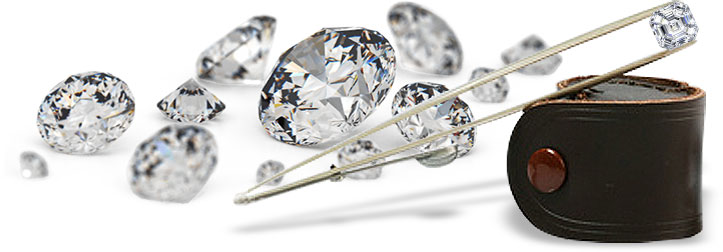
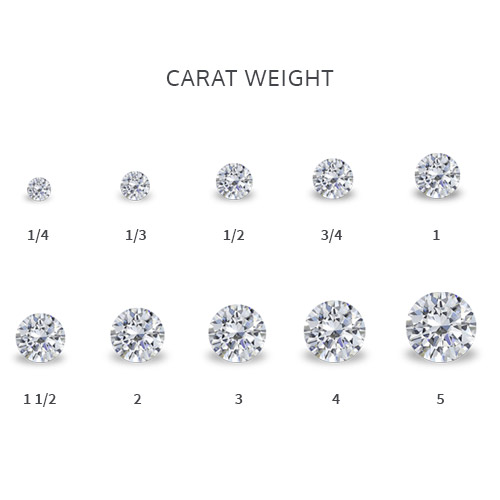
CARATS
CARAT IS THE UNIT IN WHICH THE DIAMOND IS MADE.
One carat equals to 0.2 grams or 200 milligrams. Carat weight is the prime factor that determines the weight of a diamond. Larger diamonds are undoubtedly costlier. Carat makes expressing diamond weight easier as compared to milligrams. Instead of giving three labels to diamonds weighing 20 milligrams, 211 milligrams and 220 milligrams, carat offers a category for fitting the diamonds in a one category, placing these diamonds in one-carat range.
One should not forget that high carat weight does not necessarily mean a larger looking diamond. Even diamonds of the same weight can differ on a basis of other factors, especially cut, that influences perceived size. Large diamonds are rare to find and much in demand as compared to small diamonds, even of the same quality. The price of a one-carat solitaire diamond ring is more than a ring with smaller diamonds making up the same carat weight. Diamond comparison is not effective until you compare the diamonds of similar features and qualities. While comparing the value of different diamonds, divide cost of every diamond in accordance with the carat weight and then calculate its price per carat.
COLOR
COLOR IS THE RESULT OF A DIAMOND’S COMPOSITION
While the jeweler talks about the diamond's color, he is referring to the absence and presence of the color in the diamond. Color of a diamond is a result of the diamond’s composition and does not change with time. Colorless diamonds allow light to travel through them as compared to the colored diamonds. These diamonds also emit more fire and sparkle. The process, through which a diamond is formed, is the deciding factor for its color. The whiter the diamond is, the higher value it will have.
For grading the color of diamonds, jewelers refer to GIA’s color scale that starts the rating with D for the colorless diamonds and grows up to Z as the traces of light yellow or brown color are found in the diamond. Diamonds graded from D to F are amongst the most desirable and valuable stones. These diamonds are a delight for the diamond lovers. Nevertheless, if you have a low budget, you can also find good diamonds with lower grades. These diamonds are not exactly colorless but show no color to the untrained eye.
Consider the setting of the diamond before choosing the grade of a diamond. If the setting for your diamond is platinum or white gold, go for high color grades, if you want to get it fitted in yellow gold, slightly low grade diamonds can also look great. While you will find a faint yellow hint in the diamonds that are graded from J to M, the color can be camouflaged by selecting the right setting for the stone. Many people prefer the warm glow given by low color diamonds.
Fluorescence is found in the diamonds while they are exposed to ultraviolet light with long wave. Under most of the lighting conditions, this effect cannot be seen by eyes. Some people prefer diamonds without this effect, while others look for it. It is all about the aesthetics.
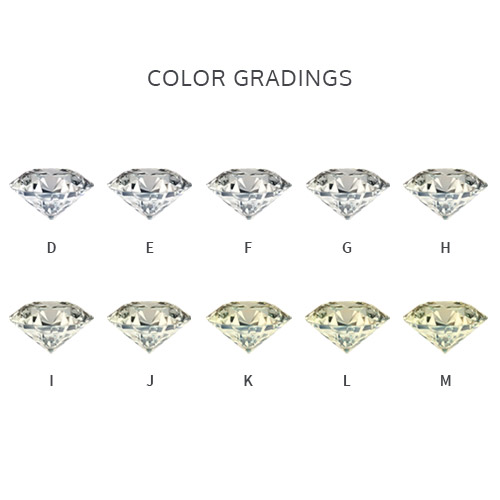
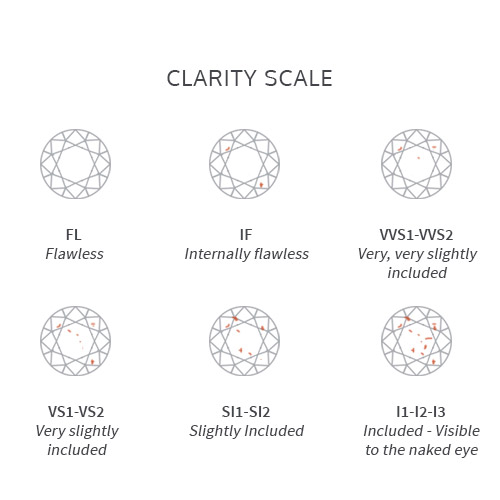
CLARITY
BLEMISHES AND INCLUSIONS DEFINE THE VALUE OF A DIAMOND
Diamond clarity means finding out characteristics of a diamond, including the blemishes and inclusions. If you consider the pressure that a diamond is created, and that they are not produced in a sterile laboratory, you will be not be surprised to find that most of these diamonds are not free of flaws.
Usually, there are two kinds of flaws found in diamonds – blemishes and inclusions. Inclusions are naturally occurring internal flaws that are found in diamonds including cracks, air bubbles, and mineral. However, most blemishes occur at the time of cutting process. The diamonds that have fewer blemishes and inclusions are considered valuable as compared to those that have more.
On a basis of clarity, grades are given to diamonds under loupe magnification. These grades vary from the ones that do not have blemishes or inclusions to those that do. There are different grades given to a diamond like F, IF, VVS1-VVS2, SI1-SI2 and I1-I2-I3. A diamond’s clarity grade is proof of the identity of the diamond.
GIA certificates consist of a diamonds' inclusion plot, as there is no similarity between two diamonds. The plot of the GIA certificate ensures the worth of the diamond you are planning to buy. It lets you have the assurance that the diamond you are receiving is the one you have paid for. If you are in a fix about what clarity grade you should choose, flawless is the best and rarest clarity grade.
Diamonds that are VS and VVS grades are great in terms of appearance and value. You can also invest in less expensive options that include SI2 and SI1, where inclusions can also not be seen by the naked eye.
CUT
A GREAT CUT PROVIDES BRILLIANCE TO THE DIAMOND
People often confuse diamond shape with diamond cut. Shape of the diamond is the outward appearance. When the diamond jewelers use the word cut, they are referring to reflective qualities of the diamond not their shape. Quality of diamond cut is a crucial part of 4Cs of diamonds. A great cut provides brilliance to the diamond. Finish and angles of all the diamonds let you determine the diamond’s ability to handle light that results in its brilliance.
When a diamond has a good cut, light travels through it easily, adding to its spark. The light that is passed through the diamond because of cut is alone responsible for making the diamonds shine and increase their desirability. If a diamond is not cut properly, light enter through the table after reaching the facets, it leaks out from bottom or side, cutting down its brilliance.
Many gemologists believe that best of diamond cuts are made after following a formula calculated for maximizing the brilliance. The formula is in the proportions of the diamond, especially in the context of how depth compares to diameter. If you are buying diamonds without GIA certificates, invest some time finding certified diamonds and gain some knowledge for identifying better cuts.
Variance in proportions to poor cut and ideal cut is difficult to find out by the casual observer. As cut is important, you can make use of different grading methods for determining the cut of a specific diamond. Selection of grade cut is based on a person’s preference. For making the best selection, one needs to be acquainted with different grades.
WHAT IS A GOOD CUT
Ideal diamond cut has maximum brilliance. The small table size of these diamonds work in the best possible way to create fire or dispersion. With ideal cut diamonds, you can be sure of having the finest return of money invested. This category is just for round shaped diamonds. Premium cuts are also equivalent to ideal cuts in round diamonds but the price is slightly lower. Very Good diamond cuts reflect maximum light entered in, providing fair amount of brilliance to the diamonds.
Good Cut diamonds reflect most of the light that passes through them. The proportion of these diamonds is outside the preferred range. Diamonds that fall under this category will allow you save money without compromising on beauty and quality of the diamond. Fair and Poor quality diamonds reflect very little proportion of light that is entered to them. These diamonds are cut in order to increase carat weight above all the other considerations.
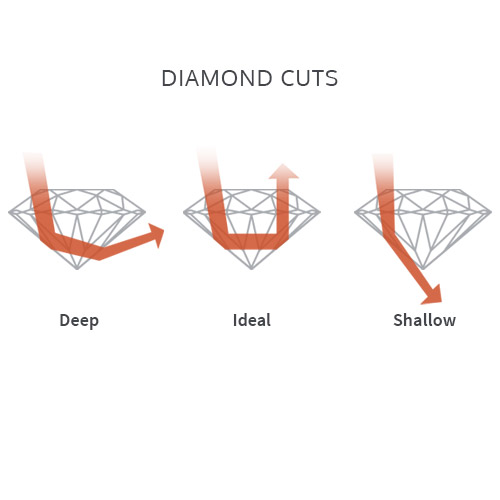
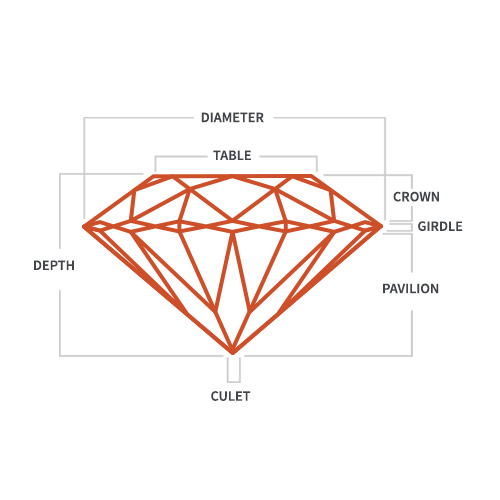
Gemstone Education
JANUARY
GARNET
Garnet, the birthstone for January, signifies eternal friendship and trust and is the perfect gift for a friend. Garnet, derived from the word granatum, means seed, and is called so because of the gemstone’s resemblance to a pomegranate seed. References to the gemstone dates back to 3100 B.C., when the Egyptians used garnets as inlays in jewelry. Garnet is the name of a group of minerals that comes in a rainbow of colors, from the deep red of the pyrope garnet to the vibrant green of tsavorites. Today, the most important sources for garnet are Africa, Sri Lanka, and India.
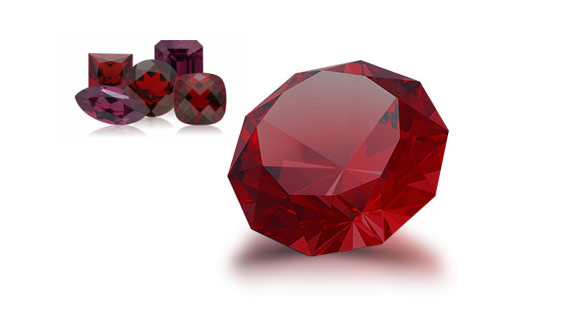
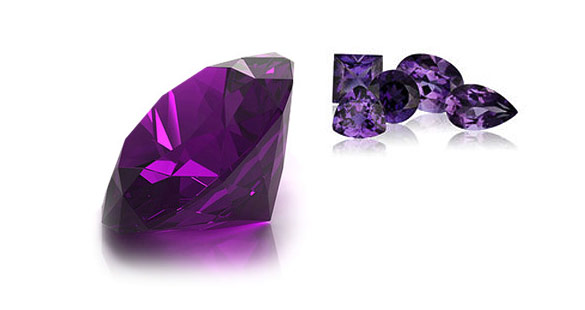
FEBRUARY
AMETHYST
Amethyst, the gemstone believed by ancient Greeks and Romans to ward off the intoxicating powers of Bacchus, also is said to keep the wearer clear-headed and quick-witted. Throughout history, the gemstone has been associated with many myths, legends, religions, and numerous cultures. English regalia were even decorated with amethysts during the Middle Ages to symbolize royalty. It has been associated with many myths, legends, religions, and numerous cultures. Amethyst is purple quartz, a beautiful blend of violet and red that can found in every corner of the earth. Historically, the finest amethysts were found in Russia and were featured in much royal European jewelry. Today, while Brazil is the primary source of this gemstone, fine material can be found elsewhere, especially in Zambia.
MARCH
AQUAMARINE
The name aquamarine is derived from the Latin word aqua, meaning water, and marina, meaning the sea. This gemstone was believed to protect sailors, as well as to guarantee a safe voyage. The serene color of aquamarine is said to cool the temper, allowing the wearer to remain calm and levelheaded. Its pale, cool color beautifully complements spring and summer wardrobes. Aquamarine is most often light in tone and ranges from greenish blue to blue-green; the color usually is more intense in larger stones. This gemstone is mined mainly in Brazil, but also is found in Nigeria, Madagascar, Zambia, Pakistan, and Mozambique.
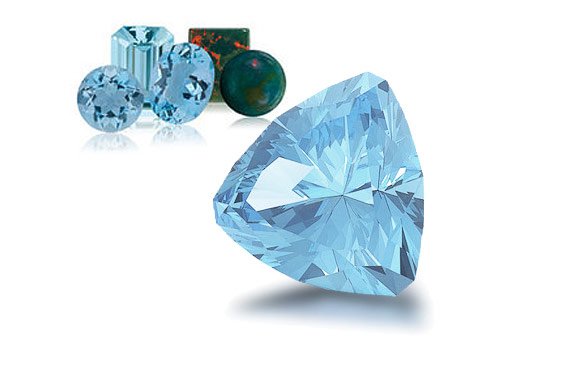
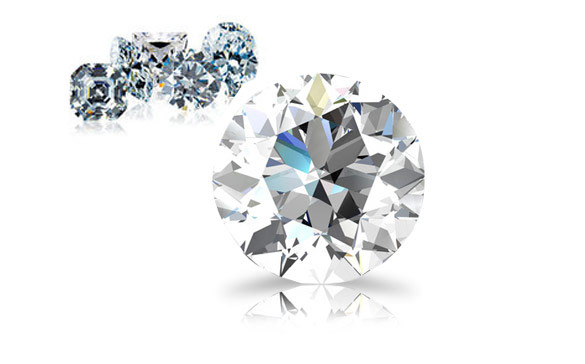
APRIL
DIAMOND
As the April birthstone, diamonds are the ideal gift for a loved one. And now you have more choices than ever. Get creative and give the ultimate gift of beauty: a fancy-color diamond. Fancy-color diamonds occur naturally, are quite rare, and are a truly exotic gem of the earth. Diamonds in hues of yellow, red, pink, blue, and green range in intensity from faint to vivid and generally the more saturated the color, the higher the value. In fact, diamonds sparkling with intense color are rare and may be priced higher than a colorless diamond of equal size. Because fancy-color diamonds are very desirable, color is sometimes introduced in a laboratory. These are correctly called color-treated diamonds. When purchasing a fancy-color diamond, the shopper should ask if any enhancements or treatments were used to improve its color and/or clarity
MAY
EMERALD
As the birthstone for May, the emerald, a symbol of rebirth, is believed to grant the owner foresight, good fortune, and youth. Emerald, derived from the word smaragdus, meaning green in Greek, was mined in Egypt as early as 330 B.C. Today, most of the world’s emeralds are mined in Colombia, Brazil, Afghanistan, and Zambia. The availability of high-quality emerald is limited; consequently, treatments to improve clarity are performed regularly.
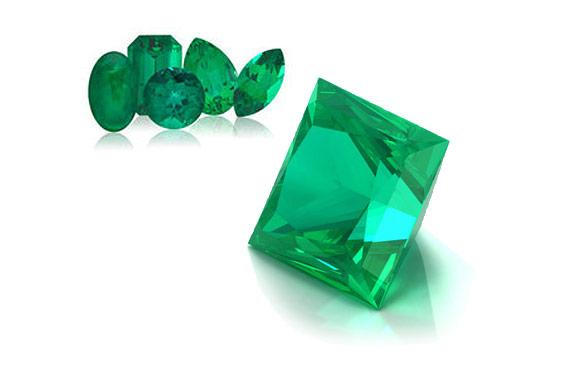
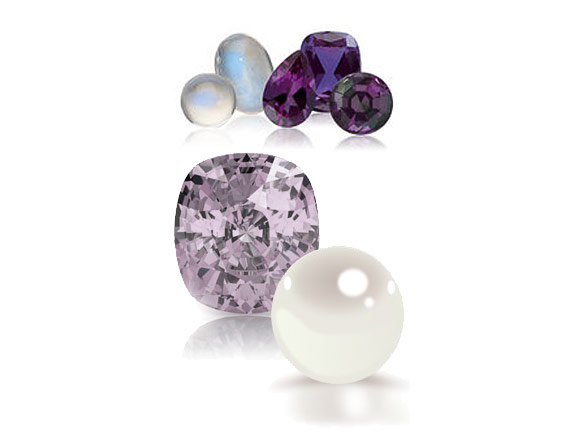
JUNE
PEARL – ALEXANDRITE – MOONSTONE
June counts three gems as birthstones, pearl, Alexandrite, and moonstone.
Pearl
Historically, pearls have been used as an adornment for centuries. They were one of the favorite gem materials of the Roman Empire; later in Tudor England, the 1500s were known as the pearl age. Pearls are unique as they are the only gems from living sea creatures and require no faceting or polishing to reveal their natural beauty. In the early 1900s, the first successful commercial culturing of round saltwater pearls began. Since the 1920s, cultured pearls have almost completely replaced natural pearls in the market.
Alexandrite
A relatively modern gem, Alexandrite, was first discovered in Russia in 1831 during the reign of its namesake, Czar Alexander II, and is an extremely rare chrysoberyl with chameleon-like qualities. Its color is a lovely green in both daylight and fluorescent light; it changes color to a purplish red in incandescent light. Due to its rarity, some jewelers stock synthetic versions of this enchanting gemstone. (Synthetic gemstones are man-made alternatives to the natural material, possessing the same physical, optical, and chemical properties as the natural gemstone.)
Moonstone
The third birthstone for June is the Moonstone. It was given its name by the Roman natural historian Pliny, who wrote that moonstone’s appearance altered with the phases of the moon — a belief that held until well after the sixteenth century. A phenomenal gemstone, moonstones show a floating play of light (called adularescence) and sometimes show either a multi-rayed star or a cat’s eye. Considered a sacred stone in India, moonstones often are displayed on a background of yellow (a sacred color) and are believed to encapsulate within the stone a spirit whose purpose is to bring good fortune. Part of the family of minerals called feldspar, moonstone occurs in many igneous and metamorphic rocks and comes in a variety of colors such as green, blue, peach, and champagne. The most prized moonstones are from Sri Lanka; India, Australia, the United States, Myanmar, and Madagascar
JULY
RUBY
There’s no better way to demonstrate your love than by giving a ruby in celebration of a July birthday. Rubies arouse the senses, stir the imagination, and are said to guarantee health, wisdom, wealth, and success in love. Ruby is a variety of the gem's species corundum. It is harder than any natural gemstone except diamond, which means a ruby is durable enough for everyday wear. Fine-quality ruby is extremely rare, and the color of the gem is most important to its value. The most prized color is a medium or medium dark vivid red or slightly purplish red. If the gem is too light or has too much purple or orange, it will be called a fancy-color sapphire.
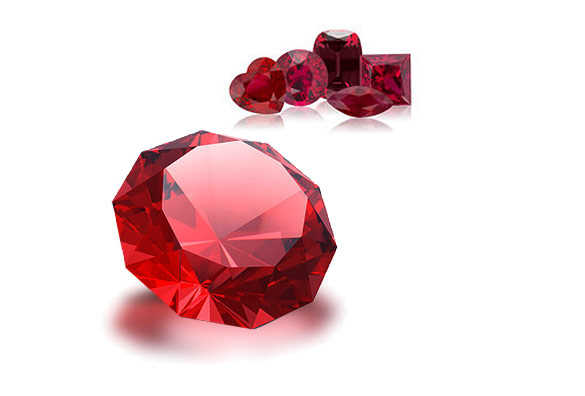
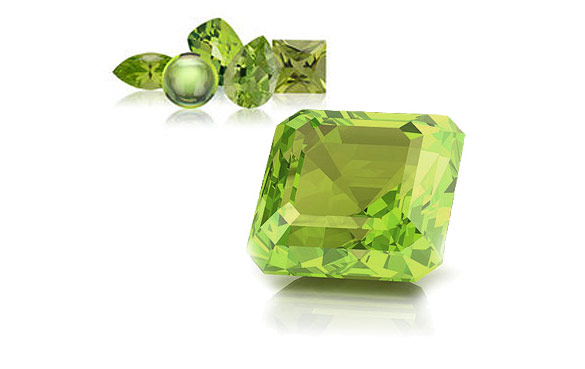
AUGUST
PERIDOT
Peridot is said to host magical powers and healing properties to protect against nightmares and to bring the wearer power, influence, and a wonderful year. As peridot is a gemstone that forms deep inside the Earth and brought to the surface by volcanoes, in Hawaii, peridot symbolizes the tears of Pele, the goddess of fire and volcanoes. Today, most of the peridot supply comes from Arizona; other sources are China, Myanmar, and Pakistan. This gemstone comes in several color variations, ranging from yellowish green to brown, but most consumers are attracted to the bright lime greens and olive greens. Peridot, in smaller sizes, often is used in beaded necklaces and bracelets.
SEPTEMBER
SAPPHIRE
Sapphire, the September birthstone, has been popular since the Middle Ages and, according to folklore, will protect your loved ones from envy and harm. Medieval clergy wore sapphires to symbolize heaven, while commoners thought the gem attracted heavenly blessings. Blue sapphires range from very light to very dark greenish or violet blue, as well as various shades of pure blue. The most prized colors are a medium to medium dark blue or slightly violet blue. Sapphire is a variety of the gem species corundum and occurs in all colors of the rainbow. Pink, purple, green, orange, or yellow corundum are known by their color (pink sapphire, green sapphire). Ruby is the red variety of corundum.
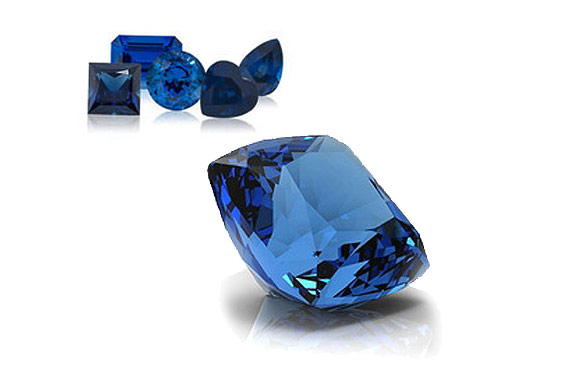
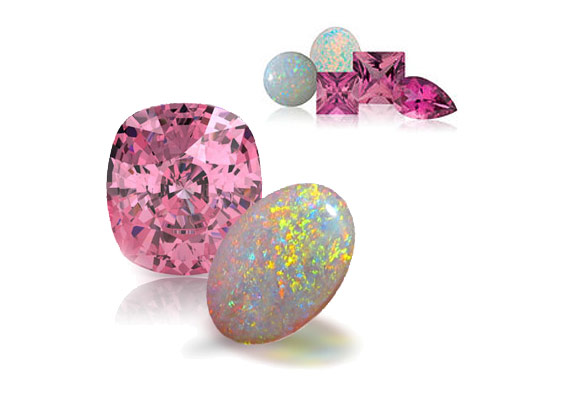
OCTOBER
TOURMALINE – OPAL
Tourmaline
Tourmaline has become a favorite gemstone among jewelry designer, and gem collectors the world over. Since it is available in a wide variety of colors, it is ideally suited to almost anyone’s taste. Tourmaline is also known for displaying several colors in the same gemstone. These bi-color or tricolor gems are formed in many combinations; gemstones with clear color distinctions are highly prized. One multicolor variety is known as watermelon tourmaline, and features green, pink, and white colors bands; to resemble its namesake, the gemstone is cut into thin slices having a pink center, white ring, and green edge. Tourmaline is found in many localities including Brazil, Afghanistan, East Africa, and the USA.
Opal
The name opal derives from the Greek Opallos, meaning “to see a change (of color).” Opals range in color from milky white to black with flashes of yellow, orange, green, red, and blue. An opal’s beauty is the product of contrast between its color play and its background. Opal is a formation of non-crystalline silica gel that seeped into crevices in the sedimentary strata. Through time and nature’s heating and molding processes, the gel hardened into the form of opals. The opal is composed of particles closely packed in spherical arrangements. When packed together in a regular pattern, a three-dimensional array of spaces is created that give opal its radiance.
NOVEMBER
TOPAZ – CITRINE
Topaz
Topaz is a gemstone available in a rich rainbow of colors. Prized for several thousand years in antiquity, all yellow gems in antiquity were called topaz. Often confused with citrine quartz (yellow) and smoky quartz (brown), quartz and topaz are separate and unrelated mineral species. The most prized color of topaz is called Imperial topaz after the Russian Czars of the 1800s and features a magnificent orange body color with pinkish undertones. Topaz also comes in yellow, pink, purple, orange, and the many popular blue tones.
Citrine
Citrine, the other birthstone for November, is known as the “healing quartz”. This golden gemstone is said to support vitality and health while encouraging and guiding hope, energy and warmth within the wearer. Citrine can be found in a variety of shades, ranging from pastel yellow to dark brownish orange. It is one of the most affordable of gemstones and plentiful in nature. Citrine is found most frequently in Brazil, Bolivia, and Spain.
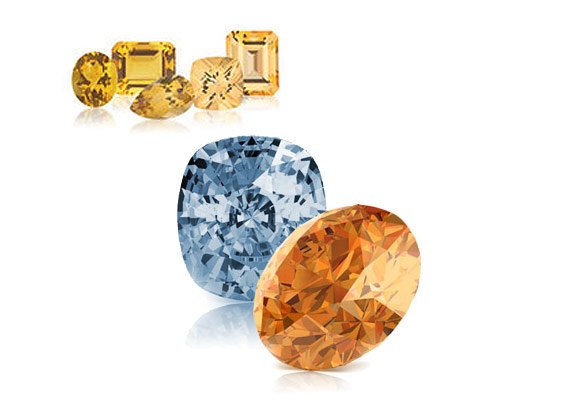
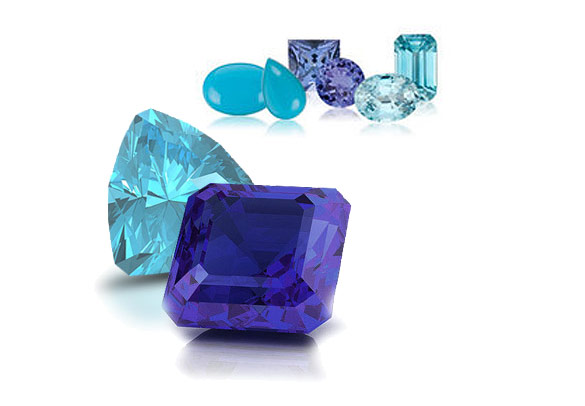
DECEMBER
TANZANITE
Discovered in the late 1960s in Tanzania, and found exclusively in this tiny area of the world, tanzanite exhibits a rich violet-blue color for which the gemstone is treasured; often it is heat-treated to achieve this color. Colors range from blue to purple, and tanzanites that are medium dark in tone, vivid in saturation, and slightly violet blue command premium prices. As tanzanite can be less expensive than sapphire, it was frequently purchased as an alternative. However, it has increased in popularity and now is valued more for its own beauty and brilliance than as a sapphire substitute.
.png)


